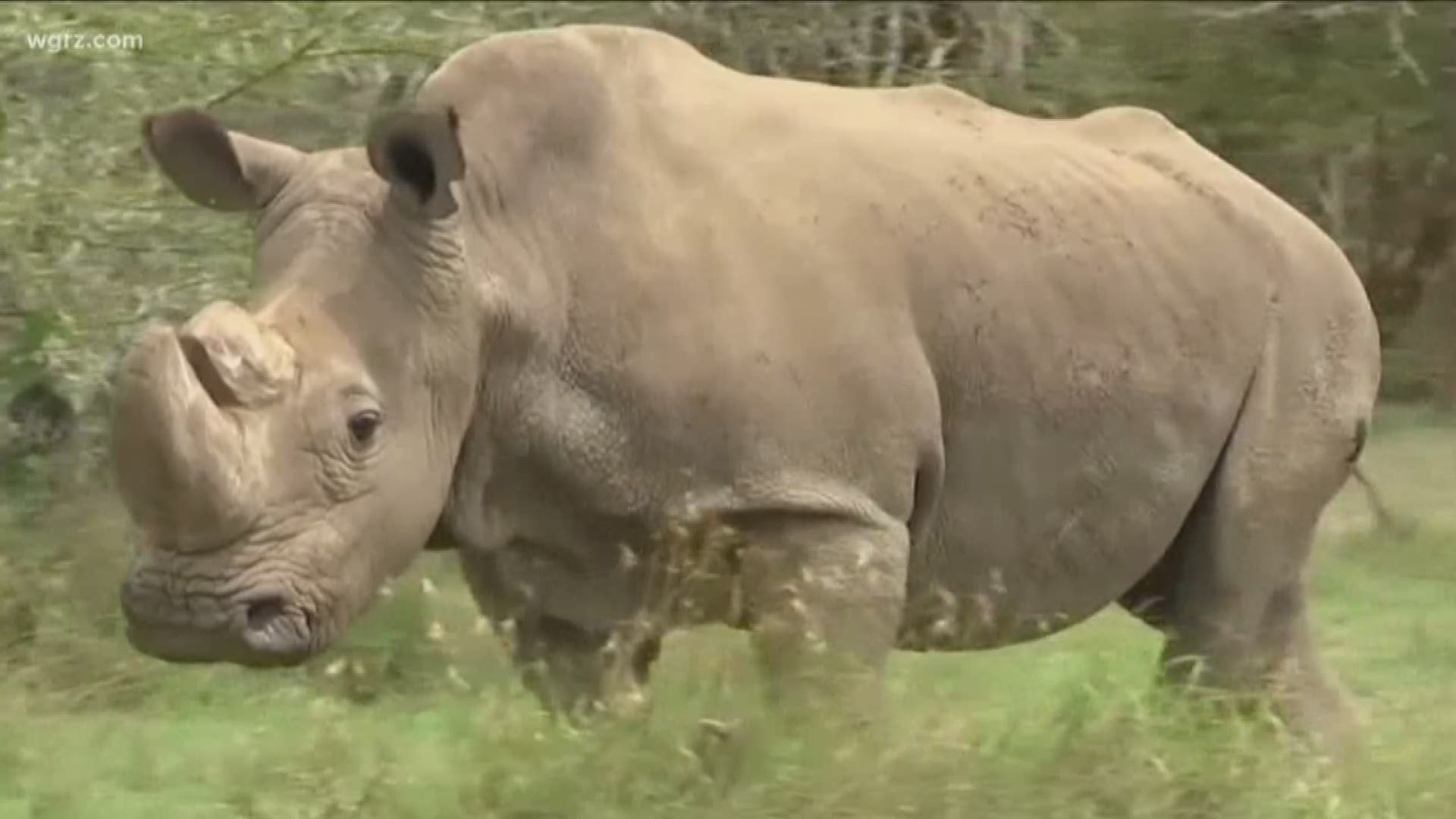BUFFALO NY — The Rhinoceros is one of the oldest species on planet earth. They've been around for fifty million years. But today, the species is rapidly in decline. And one subspecies, the Northern White Rhino, is teetering on the verge of oblivion.
The recent death of Sudan, the last male Northern White Rhino, leaves only two females alive.
Joe Hauser, the Buffalo Zoo's Rhino Keeper says, "Sudan leaves us an important message, that we can't let this happen to any other animal, any other Rhino or any other animal. This is happening all the time, you know, extinction is happening right in front of our face."


Sudan had been caught in the wild in 1975, and lived in a zoo in the Czech Republic before coming to live in the Ol Pejeta Conservancy in Kenya. His species actually went extinct in the wild in 2011.
The last two living Northern White Rhinos are Sudan's daughter and granddaughter, also living at Ol Pejeta. All three Rhinos had been closely guarded for years.
"They do have 24/7 armed guards with them, they're their keepers, they're the ones who take care of them just like as I take care of our Rhinos here, but they're with their Rhinos 24/7 - they don't leave their sides," said Hauser.
Why would rhinos need to have armed guards? Poachers.
Poaching is the main reason for Rhinos' destruction. Rhinos are killed for their horns, a valuable commodity on the black market. Rhino horn goes for over 60 thousand dollars a kilogram, pretty pricey for something made of Keratin, the same protein that makes up your finger and toe nails.
Hauser explains, "In China, it has the traditional belief that it has medicinal value in it...that it cures cancer, reduces fever, makes you live longer - all scientifically proven false. There have been several studies to see if it has any medicinal value behind Rhino horn, and it's all untrue, it's just made of Keratin, just the same as the human fingernail and hair."
Humanity will see the end of the Northern White Rhino within our lifetime - a long remarkable history vanishing forever as we stand idly by.
Other rhino species are also in peril; the Sumatran and Javan Rhino populations in the wild are under a hundred each.
But Hauser says there is precedent in the past for helping Rhinos. "We have saved the Rhino before. If we didn't turn it around in the 70's and 80's when they were getting highly poached, we wouldn't have had the Rhino at this point, so it is possible. So that's why I have to be optimistic, because we have saved the Rhino before, so it's not impossible. "
Helping preserve this ancient species, as well as the many other endangered animals on Earth, is a mission we can all take part in.
"It's going to take all of us together," says Hauser. "We have to share the story of the Rhino. A lot of people don't know that these animals are as rare as they are, and then we also have to work with our government to make sure that the government is also putting strict regulations on Rhino poaching and being in Rhino habitat."
For more Rhino information you van visit the International Rhino Foundation and Save The Rhino's websites.

